 THE FOOD SERIES
THE FOOD SERIES
GENERAL EDITOR Andrew F. Smith
American Forum for Global Education EDITORIAL BOARD Joseph Carlin,
Food Heritage Press Jessica Harris,
Queens College Karen Hess,
Independent Writer Bruce Kraig,
Roosevelt UniversityA list of books in the series appears at the back of this book. 2007 by the Board of Trustees of the University of Illinois All rights reserved Manufactured in the United States of America C 5 4 3 2 1

This book is printed on acid-free paper. Library of Congress Cataloging-in-Publication Data Allen, Gary (Gary J.) The herbalist in the kitchen / Gary Allen. p. cm. (The food series) Includes bibliographical references and index.
ISBN-13: 978-0-252-03162-5 (cloth : alk. paper) ISBN-10: 0-252-03162-8 (cloth : alk. paper) 1. Cookery (Herbs) 2. Herbs. Title. Title.
TX819.H4A57 2007 641.357dc22 2006100939
Contents
Illustrations
All illustrations are courtesy of the Missouri Botanical Garden, selected from volumes in its rare book collection. Titles of many of the old books are quite long, so they have been abbreviated in figure captions; complete information can be found in the bibliography.
Acknowledgments
A book like this is the product of the expertise and support of many people. All the credit for its strengths, and none of the blame for its weaknesses, goes to the folks below, and to countless others whose names should be here as well. The collective culinary experience of my former colleagues at the Culinary Institute of America is probably unmatched anywhere. I thank especially Tony Colella, Bob Delgrosso, Jennifer Dunn, Markus Frbinger, Eve Felder, Steven Kolpan, Krishnendu Ray, David St.
John-Grubb, Konstantin Sembos, Fritz Sonnenschmidt, Jonathan Zearfoss, and the late Karen Allison. The librarians at the Conrad N. Hilton Library of the Culinary Institute of America, the Massachussetts Horticutural Society Library, the Sojourner Truth Library of the State University of New York at New Paltz, and the Vassar College Library were always helpful. Carole Ford and Steve Lewis, of Empire State College, offered support, guidance, and endless good humor. I thank them for treating me like a fellow author, long before I was one. Howie Michels and Francine Prose expressed an enthusiasm for cooking, gardening, and this project at its very inception and provided the necessary momentum at just the right time.
Suzanne Hamlin, food writer, gadfly, and culinary networker par excellence, is the sort of person who makes good food and wine books happen, all around herand not just her own. Carole Metsger and Debra Tobin Gray plied me with seeds and plants. Bob Bragner, Joe Carlin, Armin Raab, Roger Whitehead, Richard Wright, and countless others contributed to the ongoing discussions at the rec.food.historic newsgroup. Lisa Becker, Paul Canales, Daniela Cole, Mark Henry, Pete Minich, and Neal Swidlerformer students at the Culinary Institute of Americaexhibited an excitement and energy that fueled my work, and they never complained, at least to me, about being forced to hear, again and again, about this book. Rachel Laudan, Harold McGee, Jacqueline Newman, Patricia Rain, and Paula Wolfert helped clarify my thinking and provided specific information I couldnt find anywhere else. At the University of Illinois Press, Willis G.
Regier, my editor and the Press director; Carol Betts, my copy editor; Copenhaver Cumpston, the books designer; and the thoughtful, anonymous readers of my manuscript were incredibly attentive to detail, as was Andrew F. Smith, editor of the Food Series. They never lost the broad perspective needed to bring a project like this to completion. Deborah Begley and Tamara Watson were always there when needed, usually with great food and wine, and always with great intelligence. My parents, Jack and Billie, taught me that food is important, that wonderful dishes come from all over the world, and that those dishes neednt be expensive or difficult to prepare to be delicious. My stepson, Aaron Rester, always the intellectual, is now beginning to show signs of becoming a good cook as well, thereby resolving (for me, at least) the ancient question about the relative importance of nature and nurture in a persons development.
And finally, I thank my wifethe saintly Karen Philippwhose caring, knowledge, wisdom, practicality, and sense of humor (not to mention patience, forgiveness, and forbearance) make all things possible.
Introduction
This book is not a reissue of Nicholas Culpeper, even if his work has been the basis of most herbals written in English since the seventeenth century. His list of herbswith many of the same recommendations for usehas been passed on, modified, and expanded. I hope that the present book is both larger and smaller in scope: larger, because my approach to herbs is not limited in the ways that an author from more than three centuries ago was limited; smaller, because household uses, including pharmacological uses, which were important in Culpepers day, are not relevant to our purposes here. Most herbs, at one time or another, have had claims made about their medical properties. Many books address these issues, but it is not within the scope of this book to do so.
While I do not intend to list the real or imagined medical properties of each herb, however, it is worthwhile to acknowledge the subject in a general way. In the interest of pharmacological correctness, let us examine the nature of traditional herbal remedies. There are two primary categories of herbal remedies: those that work and those that dont. Like most grand simplifications, this one overlooks the fact that specific examples may fall somewhere between these two extremes; but a simplistic assertion is sometimes useful as an explanatory tool, as long as we dont forget that it is only a tool. Herbal remedies in the former category may have been discovered by careful research, trial and error, experience, or just plain dumb luck. The fact that they work is of great interest to scientists and physicians and certainly to people who may benefit by treatment with the herbs.
Such plants contain compounds that have been used either directly as medicines or as sources of materials in the formulation of modern pharmaceuticals. Among the ones that work, we may include those plants that are especially high in valuable nutrients. Some herbs, such as purslane and sorrel, do have substantial quantities of ingredients that are essential to our well-being. These two, because they are eaten in large enough quantities to provide a significant quantity of these nutrients, are exceptional. Most herbs, even though they are rich in vitamins and minerals, are used primarily as seasoning. One simply doesnt consume enough of the plant to make much difference in health.
The second category (medicinal plants that dont work as medicine) offers a number of intriguing areas for our scrutiny. If there is no scientific proof that an herb has curative properties, yet there is anecdotal evidence for its efficacy, we must look to other causes. Once again, there are two possibilities: the scientific basis has not yet been found (but if found, moves the herb into our original first category) or the herb has some placebo effect.


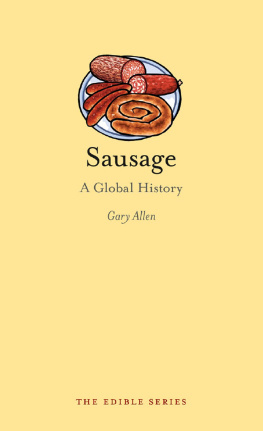
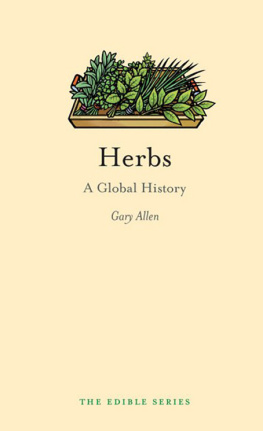
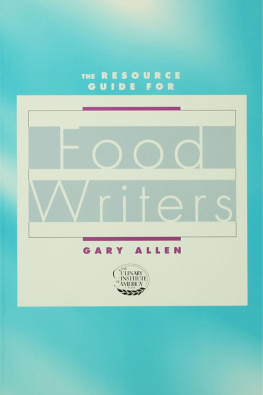

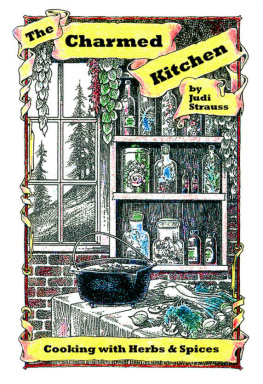
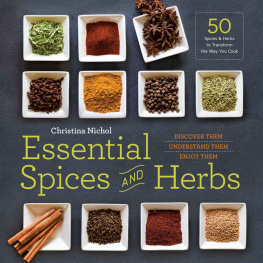
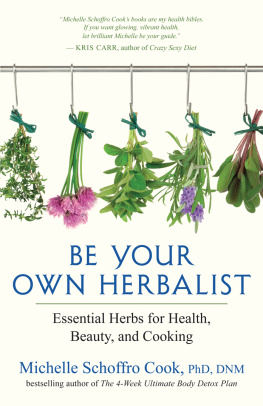
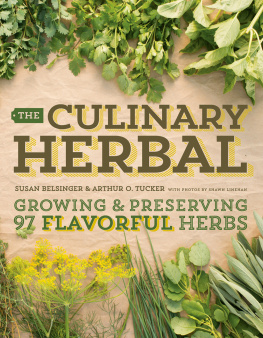
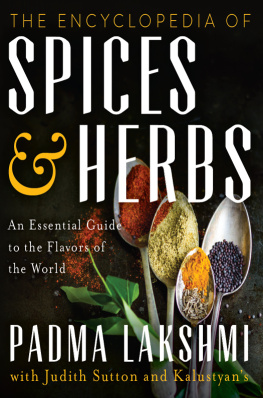
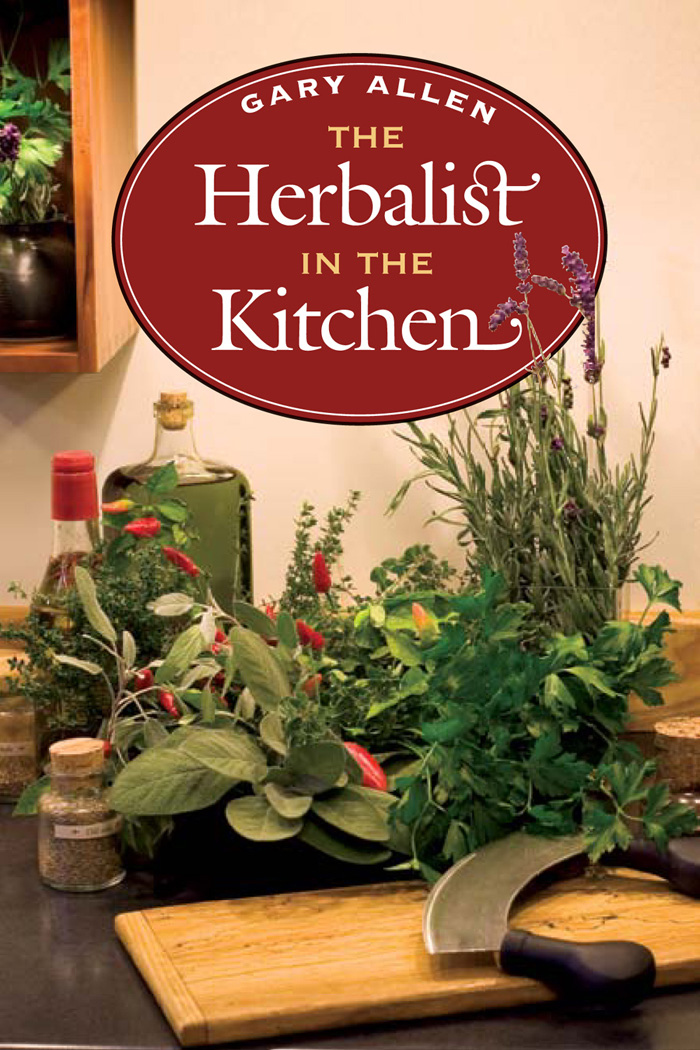
 THE FOOD SERIES
THE FOOD SERIES GENERAL EDITOR Andrew F. Smith American Forum for Global Education EDITORIAL BOARD Joseph Carlin, Food Heritage Press Jessica Harris, Queens College Karen Hess, Independent Writer Bruce Kraig, Roosevelt UniversityA list of books in the series appears at the back of this book.
GENERAL EDITOR Andrew F. Smith American Forum for Global Education EDITORIAL BOARD Joseph Carlin, Food Heritage Press Jessica Harris, Queens College Karen Hess, Independent Writer Bruce Kraig, Roosevelt UniversityA list of books in the series appears at the back of this book.
 This book is printed on acid-free paper. Library of Congress Cataloging-in-Publication Data Allen, Gary (Gary J.) The herbalist in the kitchen / Gary Allen. p. cm. (The food series) Includes bibliographical references and index.
This book is printed on acid-free paper. Library of Congress Cataloging-in-Publication Data Allen, Gary (Gary J.) The herbalist in the kitchen / Gary Allen. p. cm. (The food series) Includes bibliographical references and index.